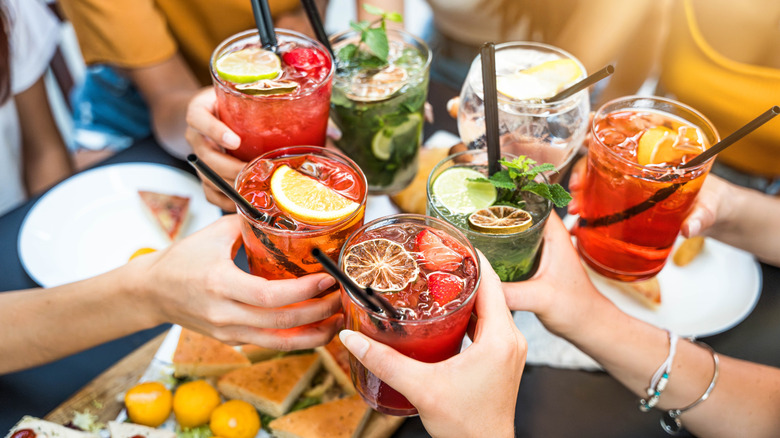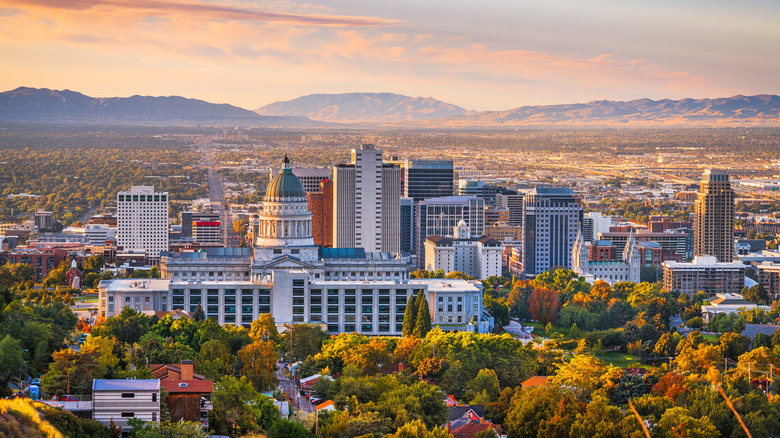The Drinking Rule You'll Have To Follow At Restaurants In Utah
Utah has historically had tough alcohol laws, as the majority of its residents are Mormon, and members of The Church of Jesus Christ of Latter-day Saints typically avoid alcoholic beverages. In fact, its residents drink the least amount of alcohol per capita of any U.S. state. The laws have loosened over time, but there are still some unique rules, including that you have to order food if you want to drink alcohol in a restaurant.
While you must get food, you don't have to eat a meal, so just an appetizer or side is okay, including ones to share like nachos or french fries (likely served with Utah's beloved fry sauce). But free food that restaurants give you, like bread and olive oil or chips and salsa, doesn't count. Customers can get a drink before ordering food as long as they show they intend to eat. Some restaurants get around this by licensing themselves as bars, which don't have the food rule.
Restaurants must follow other mandates, too. Children can't be seated within 10 feet of an eatery's bar, and anyone under 21 isn't allowed inside at all if the restaurant is licensed as a bar. Even how many drinks someone can have in front of them is regulated. Two beers of 3.2% alcohol by volume (ABV) are okay, as are two glasses of wine or a combination of one beer and one glass of wine, one beer and one cocktail, and a glass of wine and a cocktail. Two cocktails aren't allowed.
Other Utah drinking restrictions
While bars don't have the same food requirement, they must follow other alcohol rules, which also apply to restaurants. Only beer with up to 5% ABV can be sold on draft. Higher ABV beers are available in bottles and cans. Cocktails can have no more than 2.5 ounces of alcohol — split between up to 1.5 ounces of a primary liquor and 1 ounce of a flavoring liquor. And they're not kidding about the law. The primary liquor must be poured through a measuring device to check it's not over 1.5 ounces. Additionally, patrons can only get one drink at a time, so you can't order pitchers of beer or bring your group another round until the drink they have is finished.
Beer of up to 5% ABV can be sold at grocery stores and other retailers, but stronger brews, wine, and liquor must be purchased at state-owned liquor stores or package agencies with state contracts. Kegs are a no-go since beer can only be sold in containers of up to 2 liters.
The restrictions used to be even tougher. Up until 2002, bars operated as private clubs, and you had to be a member to get in; the rule was changed ahead of the Winter Olympics in Salt Lake City. Additionally, draft beer and drinks sold by retailers had a maximum of 4% ABV before the limit was upped to 5% in 2019. The Latter-day Saints also relaxed a non-alcoholic drink rule in 2012, allowing Mormons to have caffeine in cold drinks, a change that sparked the creation of dirty soda.


